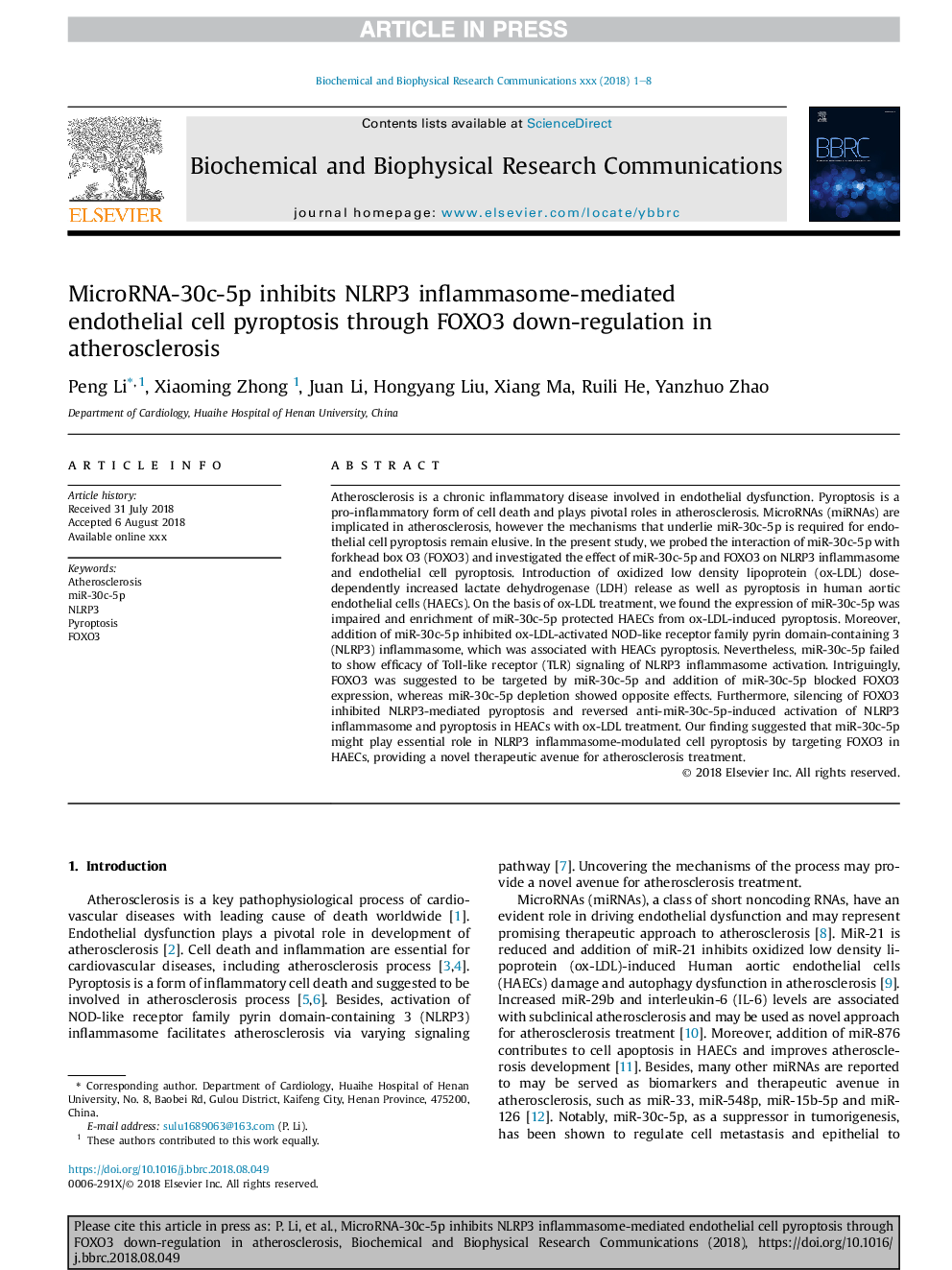| Article ID | Journal | Published Year | Pages | File Type |
|---|---|---|---|---|
| 8961867 | Biochemical and Biophysical Research Communications | 2018 | 8 Pages |
Abstract
Atherosclerosis is a chronic inflammatory disease involved in endothelial dysfunction. Pyroptosis is a pro-inflammatory form of cell death and plays pivotal roles in atherosclerosis. MicroRNAs (miRNAs) are implicated in atherosclerosis, however the mechanisms that underlie miR-30c-5p is required for endothelial cell pyroptosis remain elusive. In the present study, we probed the interaction of miR-30c-5p with forkhead box O3 (FOXO3) and investigated the effect of miR-30c-5p and FOXO3 on NLRP3 inflammasome and endothelial cell pyroptosis. Introduction of oxidized low density lipoprotein (ox-LDL) dose-dependently increased lactate dehydrogenase (LDH) release as well as pyroptosis in human aortic endothelial cells (HAECs). On the basis of ox-LDL treatment, we found the expression of miR-30c-5p was impaired and enrichment of miR-30c-5p protected HAECs from ox-LDL-induced pyroptosis. Moreover, addition of miR-30c-5p inhibited ox-LDL-activated NOD-like receptor family pyrin domain-containing 3 (NLRP3) inflammasome, which was associated with HEACs pyroptosis. Nevertheless, miR-30c-5p failed to show efficacy of Toll-like receptor (TLR) signaling of NLRP3 inflammasome activation. Intriguingly, FOXO3 was suggested to be targeted by miR-30c-5p and addition of miR-30c-5p blocked FOXO3 expression, whereas miR-30c-5p depletion showed opposite effects. Furthermore, silencing of FOXO3 inhibited NLRP3-mediated pyroptosis and reversed anti-miR-30c-5p-induced activation of NLRP3 inflammasome and pyroptosis in HEACs with ox-LDL treatment. Our finding suggested that miR-30c-5p might play essential role in NLRP3 inflammasome-modulated cell pyroptosis by targeting FOXO3 in HAECs, providing a novel therapeutic avenue for atherosclerosis treatment.
Keywords
Related Topics
Life Sciences
Biochemistry, Genetics and Molecular Biology
Biochemistry
Authors
Peng Li, Xiaoming Zhong, Juan Li, Hongyang Liu, Xiang Ma, Ruili He, Yanzhuo Zhao,
